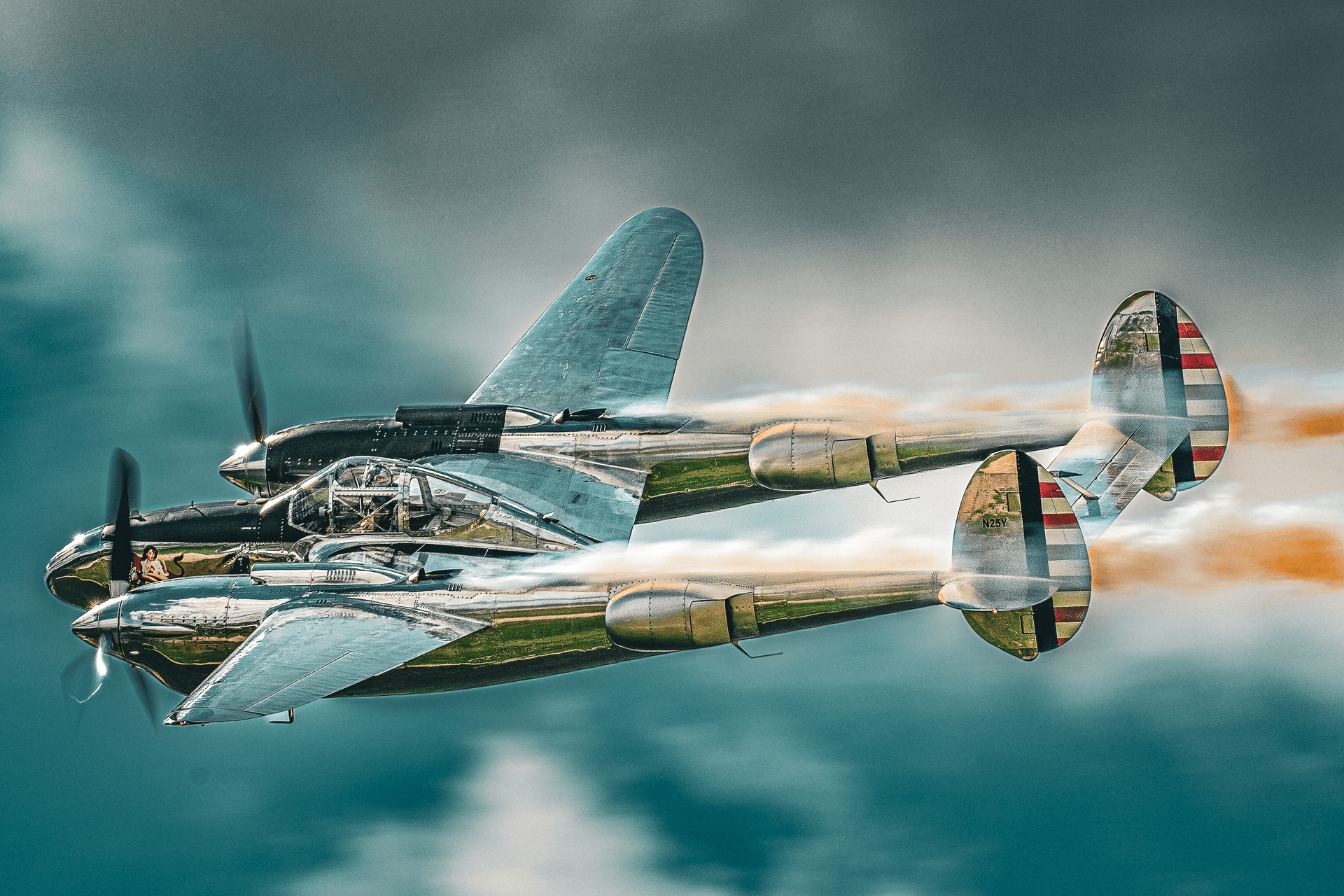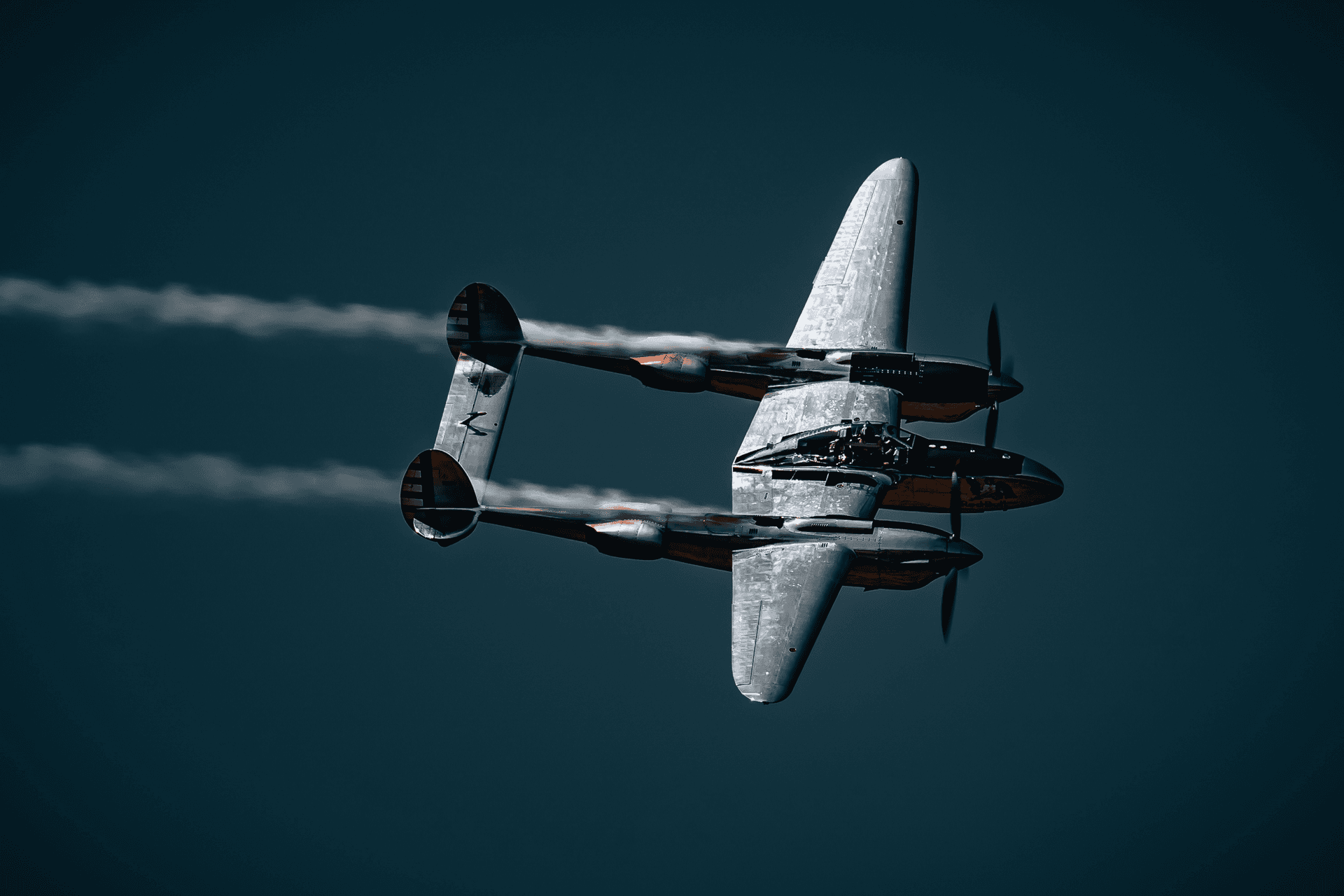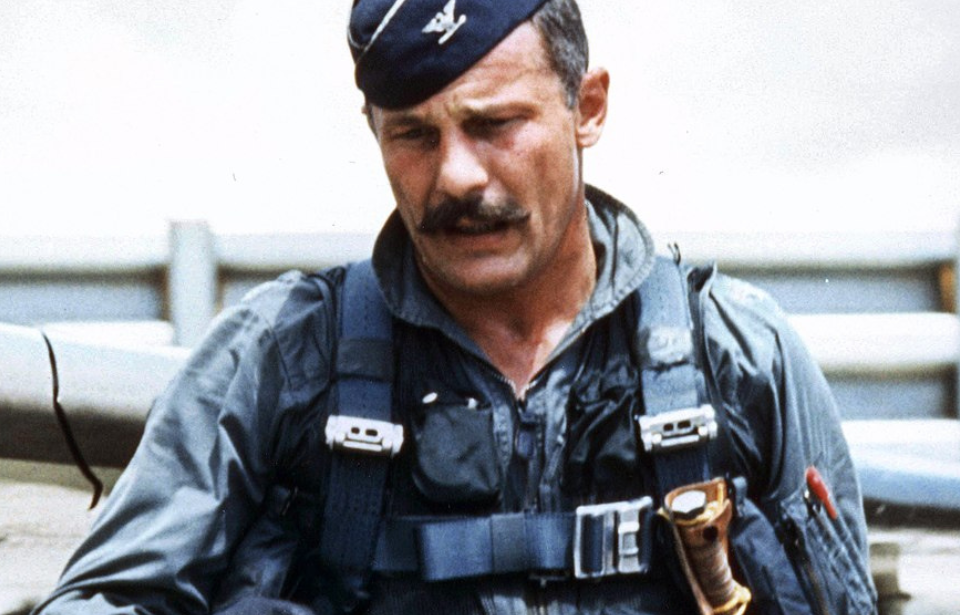
Lightning fast
The Lockheed P-38 Lightning, powered by Allison V-1710 engines, was a versatile World War II fighter. It excelled in the Pacific, notably downing Admiral Yamamoto’s plane, and served in various roles, including reconnaissance and bomber escort missions.
STORY: 2 minThe pacific theater
The Lockheed P-38 Lightning was a revolutionary fighter aircraft that played a crucial role during World War II. Designed by Lockheed’s chief engineer Hall Hibbard and his assistant Clarence “Kelly” Johnson, the P-38 was introduced in 1941. Its distinctive twin-boom design and versatility made it a standout aircraft. Equipped with two Allison V-1710 engines, which were liquid-cooled V-12 piston engines, the P-38 could reach speeds of up to 400 mph and climb at 3,300 feet per minute.
The P-38’s versatility allowed it to perform various roles, including interception, ground attack, and reconnaissance. It was particularly effective in the Pacific Theater, where its long range and high altitude capabilities provided an advantage over Japanese aircraft. Notably, America’s top aces like Major Richard Bong and Major Thomas McGuire achieved significant victories flying the P-38. The aircraft was instrumental in Operation Vengeance in 1943, which led to the downing of Japanese Admiral Isoroku Yamamoto’s plane.
Admiral Isoroku Yamamoto was a prominent Japanese naval strategist and the commander-in-chief of the Combined Fleet during World War II. Born on April 4, 1884, Yamamoto was a graduate of the Imperial Japanese Naval Academy and an alumnus of Harvard University. He is best known for planning the surprise attack on Pearl Harbor in December 1941, which brought Japan and the United States into World War II. Despite his initial opposition to war with the U.S., once committed, he focused on strategic innovations like carrier-based operations. Yamamoto’s death in April 1943 was a significant blow to Japanese morale; his plane was shot down by P-38s after American codebreakers intercepted his flight plans.
And in europe…
In Europe, the P-38 faced challenges due to engine issues and climate conditions but still played a crucial role as a long-range bomber escort and in ground attack missions. Its ability to carry a larger payload than early B-17s made it valuable for extended missions over enemy territory. Despite initial struggles with compressibility during high-speed dives, modifications improved its performance over time.
The P-38 was also extensively used for photo-reconnaissance missions, capturing 90% of the aerial film over Europe. Its adaptability extended to acting as a bomber-pathfinder and even as a night fighter with radar-equipped versions. By the end of World War II, over 10,000 P-38s had been built, flying more than 130,000 missions across various theaters.
The P-38 Lightning’s legacy is marked by its innovative design and significant contributions to the Allied war effort. Its impact extended beyond combat roles, influencing future aircraft development and solidifying its place as one of World War II’s most iconic fighters
More journals
story • 2 minsFighter pilot
story • 2 mins





